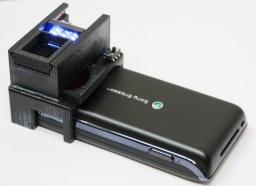Using battery-powered, inexpensive light-emitting diodes (LEDs), the researchers can excite/pump labeled E. coli particles captured on the capillary surface; there, emissions from the quantum dots can be imaged with the cell-phone camera, using an additional lens inserted between the capillary and the cell phone.From there, the phone acts like a fluorescence microscope and onboard software is used to quantify the amount of bacteria in the sample. This is an interesting device and its potential is easily underplayed because it only detects one type of bacteria. It will not, for example, identify Salmonella — outbreaks of which sickened many across Europe last year. It is worth noting, however, that E. Coli is fairly frequently encountered in the developed world and that it can relatively easily contaminate food and water. In the human body, the bacteria can cause a great deal of harm and have lasting consequences on human health. Do we need to start carrying E. Coli sensors with us wherever we go? Probably not, but it would be nice to know that restaurants, cafeterias and other places that serve food to large numbers of people had an inexpensive device that they could use to detect contamination. [Image]
This Cell Phone Attachment Detects E. Coli
If you are worried about the state of hygiene at the places that you eat, then you might want to take a look at this bacteria-detecting scanner that has been developed by researchers at the UCLA Henry Samueli School of Engineering and Applied Science. The sensor, which attaches to various types of cell phones, uses fluorescence imaging to detect the presence of E. Coli bacteria. The device makes use of quantum dots (a type of semi-conductor) with capillaries that contain antibodies to detect the presence of the dangerous microbe. How the device actually detects the bacteria is best described in the UCLA press release:


